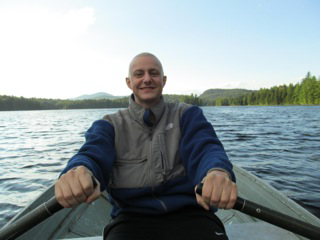Last May, after severe leg pain drove 23-year-old Kevan Busa to the emergency room in Syracuse, N.Y., he learned that he had acute lymphoblastic leukemia (ALL). Without treatment, doctors said, he wouldn’t live two weeks.
Kevan’s world as he knew it dissolved in an instant. His brain raced as he wrestled with the idea that the disease might cut his life short. On top of that, everything he had worked for was slipping away. His summer internship — finished. Plans to spend the fall semester in Spain — over.
In September 2012, when he should have been starting his senior year of college, he underwent a blood stem cell transplant, his only hope for a cure. In some ways, he was lucky: He found a donor through Be The Match (the National Marrow Donor Program) and got his transplant at Roswell Park Comprehensive Cancer Center, among the top U.S. centers that provide blood or marrow transplantation (BMT).
The treatment was grueling. “I’m not going to sugar-coat it,” says Kevan. His diseased marrow was destroyed with chemotherapy and radiation, followed by a “rescue” transplant using the blood stem cells from his donor.
That was just the beginning. Leaving the hospital after a transplant, for about 60 days BMT patients must stay within 30 minutes of Roswell Park so they can be monitored closely. They experience extreme fatigue. With weakened immune systems, they often stay indoors to avoid the germs and situations that can put them at risk for infection. During many weeks in limbo, they can easily give in to boredom and despair.
“You have to stay mentally engaged in something,” advises Kevan. “Don’t concentrate on the negatives. Make yourself a goal, and picture that goal every day.”
Kevan pictured himself graduating — on time, with his class — and starting a career in landscape architecture. But he didn’t just dream; he pushed ahead. He fused his experience as a leukemia patient with his studies in landscape architecture and completed an independent study on the ideal outdoor “healing spaces” for BMT patients. When he couldn’t sleep, he researched Buffalo’s historic parks and green spaces designed by Frederick Law Olmsted, the “father of American landscape architecture.” He thought about designing hospital spaces specifically for veterans or children or other patients with special medical needs — a goal he hopes to pursue in the future.
Dreams and hard work helped him through. Marking the last of his recovery days in Buffalo, he returned home to Syracuse at the start of the New Year.
One year ago, Kevan was so sick he could not walk. This summer, he graduated with a degree in landscape architecture from the State University of New York (SUNY) College of Environmental Science and Forestry. The day after commencement, he started a job in urban planning with the Syracuse Metropolitan Transportation Council. And on June 22, after months of training, accompanied by his mother, sister, and other teammates, Kevan biked 20 miles in The Ride For Roswell to raise funds for cancer research and patient care.
“Stay mentally engaged,” Kevan advises other cancer patients. “There’s a life afterward that’s promising. It’s worth it.”
Look for a feature about Kevan in the June 2013 issue of Landscape Architecture magazine.
